Mugamba may refer to:
- Mugamba natural region, is a natural region of Burundi in the Bururi Province or Burundi
- Commune of Mugamba, a commune in the Bururi Province or Burundi
- Mugamba, Buriri, a town in the Commune of Mugamba
Mugamba may refer to:

Burundi is divided into eighteen provinces, each named after their respective capital with the exception of Bujumbura Rural.

Bujumbura Mairie Province is one of the eighteen provinces of Burundi. It consists entirely of the city of Bujumbura, Burundi's former capital.
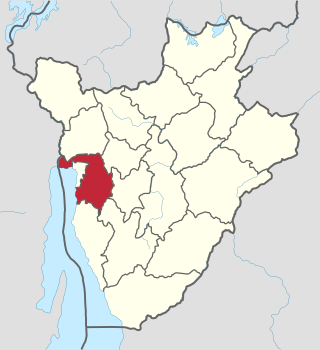
Bujumbura Rural Province is one of the eighteen provinces of Burundi. Former President Cyprien Ntaryamira was born here. It surrounds the former national capital Bujumbura and its provincial capital is Isale.

Bururi Province is one of the eighteen provinces of Burundi. It was formerly Burundi's largest province until the communes of Burambi, Buyengero and Rumonge were transferred to the province of Rumonge when it was created in 2015.
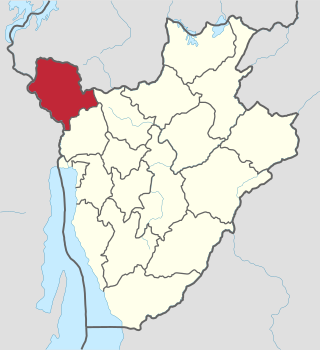
Cibitoke Province is one of the 18 provinces of Republic of Burundi.
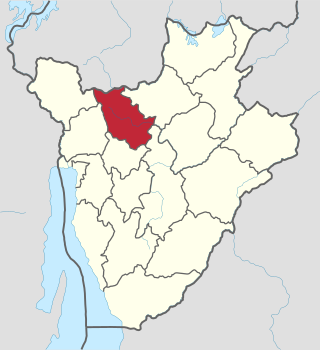
Kayanza Province is one of the 18 provinces of Burundi. Its capital city is also called Kayanza centre.
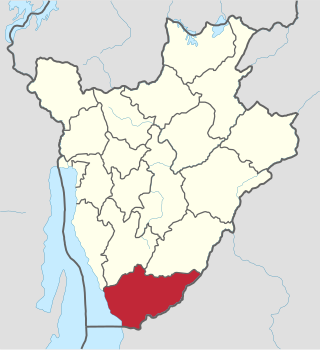
Makamba Province is the southernmost province of Burundi. The province has a population of 430,899 and covers an area of 1,960 km2. The provincial capital is Makamba. Makamba has six communes, many refugees have returned from Tanzania to this province, especially to the communes of Kayogoro, Nyanza lac, Mabanda and Vugizo. This causes a big problem, because there is not enough land for everybody. It is the most fertile province of Burundi.

Muramvya Province is one of the 18 provinces of Burundi. The capital city is Muramvya. In 2007 the province was added to the UNESCO World Heritage Tentative List.
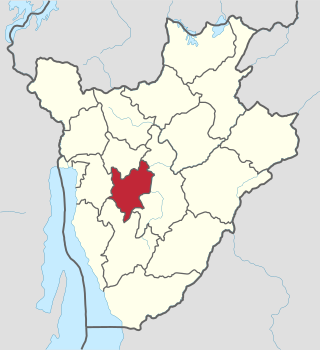
Mwaro Province is one of the 19 provinces of Burundi. Its capital is Mwaro.
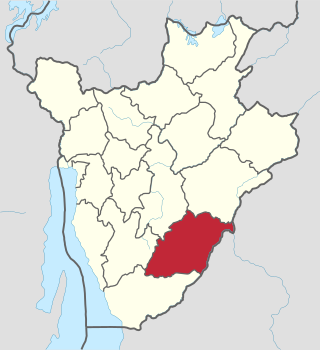
Rutana Province is one of the 18 provinces of Burundi.
Martin Nduwimana was the First Vice-President of Burundi from 29 August 2005 to November 2007. He is an ethnic Tutsi member of the Union for National Progress (UPRONA) party.

The provinces of Burundi are subdivided into 119 communes. The communes are further subdivided into collines.

Burundi is a unitary state which is sub-divided at three levels: provinces, communes, and collines (hills).
These are some of the articles related to Burundi on the English Wikipedia:

Burundi is one of the poorest African countries, burdened by a high prevalence of communicable, maternal, neonatal, nutritional, and non-communicable diseases. The burden of communicable diseases generally outweighs the burden of other diseases. Mothers and children are among those most vulnerable to this burden.
The commune of Mugamba is a commune of Bururi Province in south-western Burundi. The capital lies at Mugamba.

Rumonge Province is one of the eighteen provinces of Burundi. It was created on 26 March 2015 by combining the communes of Burambi, Buyengero and Rumonge, previously part of Bururi Province, with the Bugarama and Muhuta communes previously belonging to Bujumbura Rural Province.
Bernard Busokoza is a Burundi Tutsi politician who served as the Vice President of Burundi from October 2013 to February 1, 2014.

The Natural regions of Burundi are geographical subdivisions of Burundi that date to colonial times. They can be broadly grouped into the low zone in the west beside Lake Tanganyika and the East African Rift valley, the Zaire-Nile ridge, the central plateaus and the depressions to the north, east and south of rhe plateaus.

The Mugamba natural region is a natural region of Burundi. It extends along the ridge that divides the Congo watershed from the Nile watershed, and contains the highest peaks in the country.